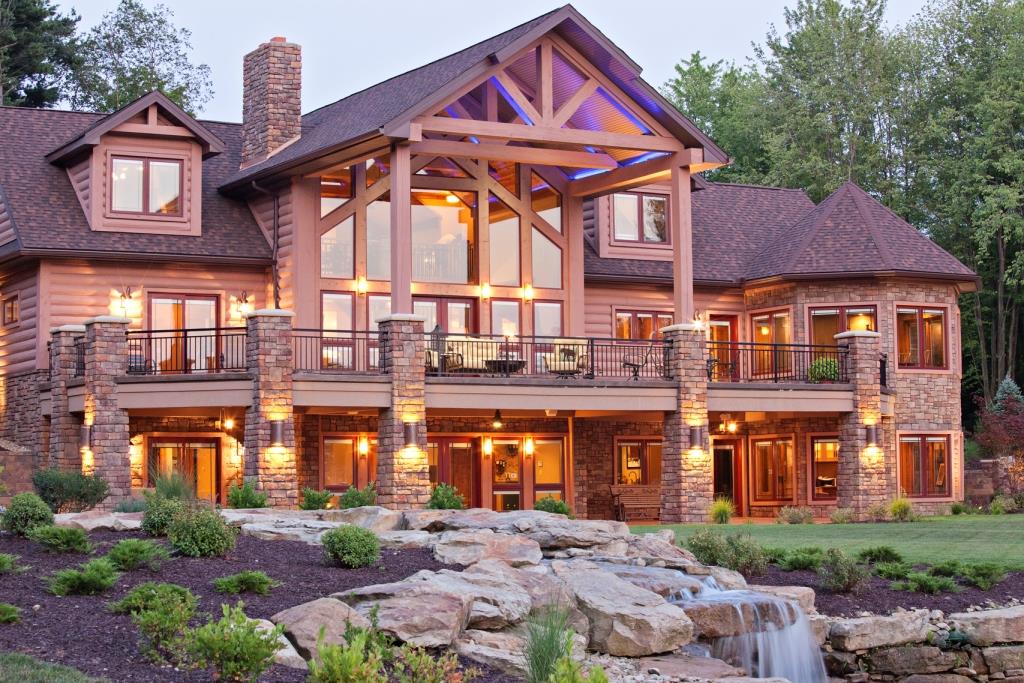
Few home styles are as natural in appearance as log cabins.
It’s that earthy, natural look that makes them so inviting and comfortable.
However, being made up of wood in such a natural state means that it is nearer
to the cycle of nature than other building materials, and, of course, part of
that cycle is decay. Log homes need to be treated properly when they are built
and until the wood is fully cured, and then inspected regularly to insure that
water, insects and other damaging elements do not establish a stronghold and
wreak havoc.
Paint a Wood House
but Never a Log Cabin
It seems contradictory that paint protects wood on other
houses, but should not be applied to logs because it can cause rot. The reason
is that logs need to breathe, and they continue to expand and contract
depending on moisture and weather conditions.
Moisture will accumulate under the impenetrable outer
surface of the log that is created by a layer of paint, and that trapped
moisture will start to rot the wood inside the log. So it isn’t the water
outside, but the small amount that is trapped in the log that is the threat.
Logs should be treated in most cases, but a breathable finish made specifically
for log homes is the only product that should be used.
Rot occurs in logs when the moisture content inside gets too
high. This happens between 30-60% moisture. To check for rot, jab an icepick
into the wood. If it penetrates easily, then the wood has rotted.
It’s important to deal with rotting wood as soon as it’s
discovered because it may be much easier to fix than if the rot is allowed to
spread. For example, if the damage is only in the outer, exposed surface of the
log, it may be possible to just cut off the face and replace that part of each
log, rather than replacing entire logs and being forced to deal with structural
issues while making repairs.
Remove Water Sources
Water in, and on, logs causes rot, so it is important to
minimize water contact. The roof overhang keeps regular rain from soaking into
log walls, but sometimes log ends extend out beyond the overhang. In this case,
if the length is just excess wood, it may be possible to trim it down. If not,
but sure to apply a finish to the logs that are exposed to the elements.
Rot in logs occurs most frequently in the logs at the bottom
of the walls. Be sure that your foundation is above the ground level. If it
isn’t, you may need to shovel back some soil, but the effort will be well worth
it to keep your walls dry.
Caring for a log cabin exterior doesn’t take a lot of time, but when it is needed,
you must take the time to deal with existing problems because they will only
get worse. Not all problems can be solved by the homeowner, but there are many
that can be.
 Handcrafted Amish Furniture Made in the Heartland of America
Handcrafted Amish Furniture Made in the Heartland of America 
